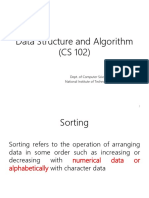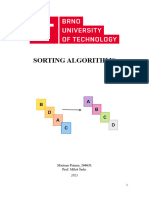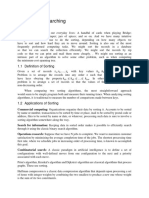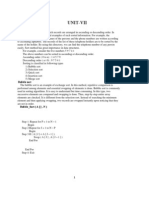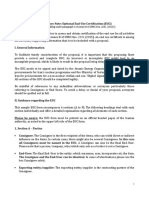0% found this document useful (0 votes)
55 views12 pagesSorting: 10.1 Aims
The document discusses sorting algorithms. It begins by defining the sorting problem as arranging a set of records so their key values are in non-decreasing order. It then describes three O(n2) sorting algorithms - Bubble Sort, Insertion Sort, and Selection Sort. Bubble Sort compares adjacent elements and swaps them if out of order until the list is fully sorted. Insertion Sort builds the sorted list one item at a time by inserting each element into the correct position. Selection Sort iteratively finds the minimum element and swaps it into the proper place.
Uploaded by
benjamin dzingisoCopyright
© © All Rights Reserved
We take content rights seriously. If you suspect this is your content, claim it here.
Available Formats
Download as DOCX, PDF, TXT or read online on Scribd
0% found this document useful (0 votes)
55 views12 pagesSorting: 10.1 Aims
The document discusses sorting algorithms. It begins by defining the sorting problem as arranging a set of records so their key values are in non-decreasing order. It then describes three O(n2) sorting algorithms - Bubble Sort, Insertion Sort, and Selection Sort. Bubble Sort compares adjacent elements and swaps them if out of order until the list is fully sorted. Insertion Sort builds the sorted list one item at a time by inserting each element into the correct position. Selection Sort iteratively finds the minimum element and swaps it into the proper place.
Uploaded by
benjamin dzingisoCopyright
© © All Rights Reserved
We take content rights seriously. If you suspect this is your content, claim it here.
Available Formats
Download as DOCX, PDF, TXT or read online on Scribd
/ 12







